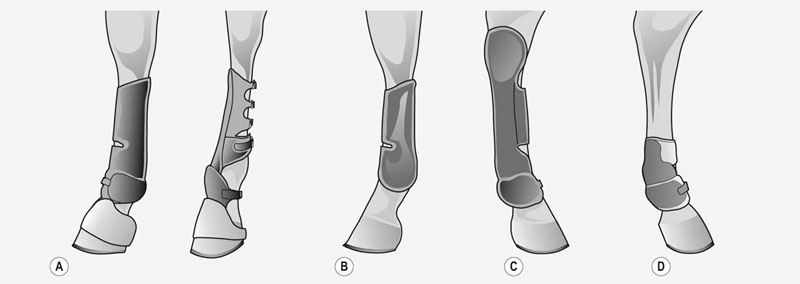Subsequent to their development in North America, Standardbreds and harness racing were exported to many countries. Competition in European countries is exclusively between trotters, whereas that in the remainder of the world is between either trotters or pacers.1 Importantly, harness racing is about competition at a particular gait (either trot or pace) and less so about the breed, with many countries having indigenous breeds used for harness racing. Presently, at least 24 countries, including countries in Scandinavia, Europe, and Australasia have active organizations that promote Standardbred racing. The centers of Standardbred racing are the Mid-west and East Coast of the United States, eastern Canada, Scandinavia, France and Belgium, Australia and New Zealand. France is the only country which also has mounted trotters. The Standardbred racehorse, sometimes referred to as the American trotter, originated in the United States and Canada in the early 1800s, with the breed society being formed in 1871.2 Standardbred horses all trace their male lineage to Messenger, a Thoroughbred foaled in England in 1780 and exported to the United States. Messenger was the great-grandsire of Hambletonian 10 (1849–1876) to which all Standardbreds can trace their ancestry and to his four sons: George Wilkes, Dictator, Happy Medium and Electioneer.3,4 However, while mainly derived from Thoroughbred stock, Morgan and Hackneys also contributed to the Standardbred gene pool.2 The Standardbred name derived from the requirement that in order to be entered into the register of the new breed, trotters had to complete a mile in a prescribed (standard) time of 2 minutes 30 seconds and pacers in 2 minutes 25 seconds. Standardbreds are divided into two groups based on gait while racing, although a small number (~2%) use both gaits at some stage in their racing career.5 There is a strong influence of gait on breeding in that most horses race at the gait used by their sire. Approximately 20% of offspring sired by trotters register as pacers, while only 1% of offspring sired by pacers are registered as trotters.6 The extent of the genetic difference between Standardbred trotters and pacers is as great or greater than that seen between some distinct horse breeds.6 The Standardbred (American trotter) is the origin of the Danish trotter, Romanian trotter, Swedish Standardbred trotter, and the Russian trotter.2 The Coldblooded trotter of parts of Scandinavia is not related to the Standardbred, being derived from the Dole horse.7 Trotters in Scandinavia derived approximately 94% of their genetic make-up from North American Standardbreds, with the remainder coming from French horses.8 The principal breeds of horses used for harness racing include, in addition to those listed above, the French trotter, Italian trotter, Orlov trotter, Finnhorse, Icelandic toelter, Dole horse, and North-Swedish cold-blooded horses.4 The Italian trotter is a harness racing horse developed over the last century by crossing Thoroughbred stallions with French (Norman) trotters, Russian trotters and American Standardbred mares. The goal of the selection was to blend the speed of the Standardbred with the stamina of the French trotter.9 The Orlov trotter was developed in Russia in the 1770s by crossbreeding of Dutch, Danish, English and Mecklenburg harness breed mares with Arabian stallions.4 Many Orlovs are grey and all are trotters. The Russian trotter was developed by crossing the Orlov trotter with American Standardbreds, of which 156 stallions and 220 mares were imported into Russia between 1890 and 1914.4 Dole trotters, which are descended in part from Dutch Friesian horses, originated in the Gudbrandsdal valley in Norway.4 The breed is referred to as the cold-blooded trotter and is a result of crossing of Dole horses with imported Swedish or Thoroughbred stallions. Swedish trotters are of two distinct populations: the Standardbred trotter and the North-Swedish trotter. Pacers typically complete a mile in approximately 1–3.5 seconds faster than does a trotter over the same distance.5 The world record time for a pacer of 1 minute 46.2 seconds was achieved by Cambest (USA), a five-year-old bay stallion racing over a one mile track in Springfield, Illinois, USA on August 14, 1993.10 The world record time for a trotter over one mile of 1 minute 49.6 seconds was achieved by Enough Talk, 5-year-old bay gelding racing in Colonial Downs, Virginia, USA on a track of greater than one mile in circumference on November 11, 2008.10 In Europe, two of the main races are the Elitloppet (Sweden) with a race run over 1609 m and a record of 1’09’ ‘8/km achieved by Exploit Caf, an Italian trotter, and the Prix d’Amérique (France) with a race run on 2700 m and a record of 1’12’ ‘/km achieved by Ready Cash in 2012 and previously by Offshore Dream in 2007. For mounted trot, the record is 1’10’ ‘8/km achieved by Malakite, a six-year-old female in 2008 on a 2175 m distance. There is an association between age and the race times of harness horses. Canadian trotters and pacers were noted to have their peak race performance (shortest race time) at 2.5 years after starting racing, or at 5.7 years of age.4,11 Similarly, French trotters have their fastest racing times at six years of age.4 Intact males and gelding trotters and pacers achieve their best speed one year after that of females.11 Sex is also associated with race times, with intact males having faster race times than geldings or females. The effect is most pronounced in younger and middle-aged horses and is not appreciable in seven-year-old horses, likely because of the selection pressure which contributes to superior female horses racing at an advanced age. In general, males and geldings are one second faster over one mile than are females.11 Male horses racing in New Zealand are 1.6 times more likely to win or place than are female horses.12 There is a marked effect of age at first race on career duration and quality. Standardbred horses and Finnish trotters that start their career early (i.e. as two year olds) have longer careers and are frequently better performers than are horses that start at an older age.1,12,13 Horses that first raced at two years old retired at 5.41 years of age and horses that first raced at three years of age retired at 5.62 years of age, a difference that was not statistically significant.13 Horses that raced as two year olds in New Zealand were 2.4 to 4.3 times more likely to have won, or placed, respectively, during their career.12 For Canadian trotters and pacers, increasing age at first start was associated with increased attrition (loss from racing).11 Canadian horses that first raced as two year olds had longer racing careers than did horses first raced as three year olds (5.1 vs 4.4 years). Horses older at the time of their first race had progressively shorter racing careers. Together, these studies do not provide evidence of a deleterious effect of training and racing at a relatively young age on harness horses. Elucidation of the equine genome has increased the capability to determine the genetic basis of athletic performance,14 as illustrated by the association of speed measures with single nucleotide polymorphisms of the myostatin gene in Thoroughbred horses.15 These topics are discussed in detail in Chapters 1 and 4. The population of Standardbred racehorses has been subjected to strong selection pressure based on racing performance for most of the duration of the breed. The relative consistency of the type of racing, including use of the one mile (1640 m) race, has facilitated this selection and determination of estimates of heritability of various indices of performance.16 Earnings (log transformed) are highly heritable (0.41) with time, best time and earnings being somewhat less so (0.34, 0.25, and 0.2, respectively).4 Consequently, a number of countries now use the Best Linear Unbiased Prediction (BLUP) to guide selection and breeding of athletic horses, including trotters in Europe. This topic is comprehensively reviewed.4 A consequence of this strong selection pressure, and other factors such as improved training methods, equipment and racing facilities, has been a progressive reduction in race times.8 The decrease in race time has been well documented for Swedish trotters (Fig. 49.1). The reduction is exponential and appears to be approaching an asymptote, which is predicted to occur in 2015.8 While it is well recognized that many non-genetic factors influence racing ability, and in particular the speed over any one race, the ability to detect effects of selective breeding rely on identifying methods to compare horses to a common standard. The concept of the ‘race pace’ has therefore evolved. The ‘pace’ of a race is the speed of the winning horses. Performance of non-winning horses is then standardized by linear regression to this ‘pace’, thereby removing the influence of environmental factors.17 Using this and similar approaches, heritability of speed was 0.31 ± 0.3 for pacers and 0.16 ± 0.09 for trotters.18 Heritability of speed was lower for three year olds than for two year olds (0.25 ± 0.03 vs 0.44 ± 0.07, respectively) and may be due to culling.18 Similarly, the heritability of earnings, average time and best time for trotters was 0.20, 0.32, and 0.25, respectively.19 The heritability of best time for a pacer was 0.23.19 Standardbreds are bred with the intention of having them race, although not all foals born and registered eventually race. In Australia in 2001 there were 13 552 horses that had 145 471 starts in 15 558 races for a total stake money of $71 500 000.20 Sweden, which permits only trotters to race, has 31 harness tracks at which approximately 10 000 races are held with 110 000 starters each year.21 The total prize money annually is 700 000 000 crowns.21 There has been a progressive decline in the number of Standardbreds racing in North America (Table 49.1). Table 49.1 Demographics and earnings of Standardbred horses in North America,1986–2011 (Source: David Carr, United States Trotting Association, February, 2012.) In 2011, in France, 11 113 Trotting races were organized on 226 race tracks during 1598 meetings (Table 49.2). The total earnings offered during the races were 231 397 000 euros, which means about 20 822 euros/race. There were 152 244 horses (13.7 horses/race). Table 49.2 Number of races of trotters in France in 2011 (Source: SECF, Société d’Encouragement du Cheval Français, 2011.) There is considerable wastage of foal crops. Approximately 67% of 762 Canadian Standardbred foals raced,11 whereas in New Zealand 1575 of 3032 (51.9%) of foals born in 2001/2002 never raced.12 The situation in Australia is similar to that in New Zealand, with 38% of 10 205 foals born in1990 eventually starting a race.22 Most Standardbreds are eligible to first race as two or three year olds. Although information regarding age at first start is not available for all regions in which Standardbreds race, in Canada the average age at the time of the first race for horses born in 1972 was 3.4 ± 0.5 years,23 although the age at which horses first race has likely decreased since that time. For foals born in 1972 in Canada, 67% eventually raced with approximately 17% having their first race as two year olds, 48% as three year olds, and 22% as four year olds.23 This is similar to the situation with Dutch trotters.24 The racing life ranged from <1 to 10 years, with an average of 4.1 ± 0.1 (SEM) years. There is no difference in racing life span of trotters and pacers.23 There are important differences among sexes in the proportion of horses that race – 78% of males (colts and stallions), 88% of geldings, and 54% of fillies born in Canada in 1972 raced at some time.5 Of Standardbred foals born in Australia, 31.7% of males and 16.1% of females start a race.22 The smaller proportion of fillies that eventually race is likely related to their tractability in early training, and opportunities for breeding when health and management problems related to training or racing are encountered. Among Standardbreds born in Canada in 1972, 80% won at least one race during their career.25 The number of starts during the horse’s career ranged from 1 to 347, with the 95% confidence interval for number of starts being 21 to 70 races. Thirty percent of horses had fewer than 20 starts and 29% raced more than 100 times.25 The average horse had its best racing performance (fastest race) 2.55 years after its first race at a mean age of 5.27 years.25 In Australia, 22.8% of 10 205 foals born eventually won at least one race, with 28.2% having a race start at three years of age.22 There has been considerable interest in investigating the relationship between readily measured physiological variables and performance in harness horses. A clear relationship exists between V4 (the speed at which a blood lactate concentration of 4 mmol/L is achieved) and, to a lesser extent, V200 (the speed at which a heart rate of 200 beats per minute is measured) and level of performance for both healthy trotting harness horses and trotters with sub-clinical disease.26–29 Horses with superior performance have higher speeds at V4 and V200, whereas horses with poor performance have lower values. These results are generalizations across a number of horses and application to individual animals can be challenging unless this information is collected as part of the regular training program. Horses with superior performance also have, as a group, higher aerobic and anaerobic capacity and associated greater workload capacity during high-speed exercise tests to fatigue run on a treadmill.30 The greater aerobic capacity of horses with superior performance is considered to be related at least in part to their greater heart size and hence capacity for oxygen delivery.31 Male Standardbreds with a lower percentage of body fat (a relatively higher fat free mass) have a shorter race time, perhaps because of a greater capacity to generate power per kilogram of body weight.32 Standardbreds are raced both under saddle or pulling a light cart (sulky) upon which the driver sits. Racing under saddle is uncommon and mainly of novelty value. Almost all Standardbred racing involves the horse pulling a cart (sometimes referred to as a racebike or ‘bike’). There are a variety of terms used to describe horses and equipment used in harness racing and a dictionary of these terms is available.33 Standardbreds race using either of two gaits: trotting or pacing (Fig. 49.2). While within the one racing jurisdiction horses may use either gait, pacers always compete against pacers and trotters always compete against trotters. Pacing is the faster gait with pacers completing one mile approximately 3.5 seconds faster than trotters.11 Trotters move with a diagonal gait such that the left front and right rear legs are advanced simultaneously, as are then the right front and left rear. Trotters are either line-gaited or passing-gaited. Line-gaited trotters move their ipsilateral limbs in the same saggital plane while passing-gaited trotters move their limbs in different saggital planes. The limbs of passing-gaited horses pass each other during the gait, whereas those of the line-gaited horse come together (Fig. 49.3). There are also differences in the trotting gait of younger (immature) and older (mature) trotters with younger horses increasing speed by increasing stride frequency and decreasing stride length. Older horses increase speed by increasing both stride frequency and stride length.34 Pacers move in a lateral gait with the legs on one side of their body advancing simultaneously such that the left front and rear, and then the right front and rear, are advanced at the same time (Fig. 49.2) such that there are two stance (weight-bearing) phases and two suspension phases during each stride.35 Approximately 55% of the stride length (about 6.7 m at 15 m/s) occurs during the two stance phases and 45% during the two suspension phases.35 Increases in speed in pacers are a result of an increase in the length of the suspension phase, not the stance phase.36 Interference in trotters involves the hoof of the forelimb on one side striking parts of the ipsilateral hindlimb (Fig. 49.4). Scalping, speedy-cutting, shin-hitting and hock hitting all may occur. Injuries are usually mild but may be sufficiently painful for the horse to be hesitant in trotting or pacing, or to not want to race at top speed. Interference in trotters can result in the horse stumbling and breaking gait. Among pacers, interference is between the forelimb and contralateral hindlimb and is termed ‘crossfiring’ (Fig. 49.5). Striking of the sole of the forefoot by the ipsilateral hind foot is referred to as ‘forging’ (Fig. 49.6). Injuries to the fetlock, metacarpus, carpus and medial antebrachium occur when the contralateral hoof hits one of these areas (Fig. 49.7). Interference can be minimized by changes in shoeing, including the use of weighted shoes, and equipment. Injuries resulting from interference can be minimized by application of protective boots and bandages (see below). Standardbreds wear a wide range of equipment when training and racing.33 The equipment is used to assist the horses in maintaining the desired gait, attach the horse to the sulky or cart, and permit the driver to maintain control and direct the horse.37,38 Pacers are aided in maintaining their gait by light hobbles (Fig. 49.8) which they wear whenever they race, whereas trotters only occasionally wear trotting hobbles. The hobbles are usually made of light plastic and have a length of 50–60 inches (112–135 cm) which is adjusted depending on the size of the horse and the length of the track. Shorter hobbles are used on smaller (e.g. half-mile) than on larger (e.g. one mile) tracks.37 Horses are more likely to ‘break’ if the hobble is too long, whereas a hobble that is too short limits performance.37 The harness consists of a girth, backstrap and crupper, pads, and breast collar. The shafts of the sulky or cart are connected to the harness. The tail is placed through the crupper, which is attached to the backstrap. The backstrap prevents the harness from sliding forward on the horse. The breast collar prevents the harness from slipping back. The breast strap is occasionally replaced with a Buxton martingale (Fig. 49.9). Martingales, which usually run from the girth to the halter, are used to keep the horses head in position and in particular to prevent it throwing or tossing its head. There are several different designs of martingale (Fig. 49.10). Horses also wear any one of a variety of bridles (which may include ‘blinders’) designed to limit the visual field (Fig. 49.11). Bridles are selected based on the horse’s temperament and handling characteristics. Bits, which are used to direct the horse and to maintain its head position, vary widely in design (Fig. 49.12). Check bits are used with a check rein to prevent the horse excessively flexing its neck and ‘choking down’. The check rein is attached to the check bit over the nose and then runs up between the ears before attaching to the girth strap over the horse’s back. Horses may wear a variety of boots to protect against the effects of interference (Fig. 49.13). Boots that cover the dorsal metatarsus and fetlock protect against interference in these areas. Other variations on this boot include an attachment that protects the speedy-cut area of the dorsal pastern. Yet other boots extend proximally to protect the hock. A shorter boot protects just the distal metatarsus and fetlock. Bell boots and scalpers provide protection for the proximal hoof and coronary band. A major consideration when training horses is the energy requirements needed during the actual racing event. Standardbred racehorses generally race over distances of 1600–3200 m (1–2 miles), which usually takes approximately 2:00–4:20 (min:s) to complete. While there is some disagreement over the exact proportion of energy supplied by the aerobic and anaerobic pathways, it is generally considered that Standardbred racehorses gain the majority of their energy during a race from the aerobic pathway (∼60–90%) while the anaerobic pathways contribute a smaller but still important proportion (10–30%).39 For that reason, training the Standardbred should focus on stressing both the aerobic and anaerobic energy pathways, as both respond to training;40 however, the majority of work should be aerobic in nature. Traditionally, training programmes for Standardbreds have incorporated 3–4 basic phases. Standardbreds in Australasia and Europe typically race over distances ranging from 1600 to 4100 m, whereas Standardbreds in North America tend to race over the shorter distances of 1600 to 2200 m. While current practices of New Zealand trainers and an example of a more scientific approach from an Australian trainer have been published, similar training information from American trainers is difficult to find.41,42 A survey of the training practices used by New Zealand’s top 100 trainers of Standardbred maiden pacers revealed that most trainers tend to give their horses very similar types of training,42 with most New Zealand trainers separating their training up into three preparation phases and a racing phase.42 The initial preparation phase is similar to the foundation phase described above and consisted mainly of jogging the horses at a steady pace (see Table 49.3) for 5–6 weeks with one rest day per week. The midpreparation phase followed and signaled the start of fast work. Fast work normally involved the horses being harnessed-up into their hobbles and pulling the racing cart. The final preparation phase, which lasted about four weeks, then followed. In the racing or competition phase the majority of New Zealand trainers continued a similar pattern of training; however, about one-third of the trainers incorporated one or more ‘strong’ workouts (galloping rather than pacing in the cart). Table 49.3 Training phases for maiden pacers of a typical top trainer In New Zealand
Veterinary aspects of racing and training horses used for harness racing (trotters and pacers)
The breed and racing
Origins of the breeds
Performance and its determinants
Race times
Effect of age and sex
Effect of age at first race
Heritability
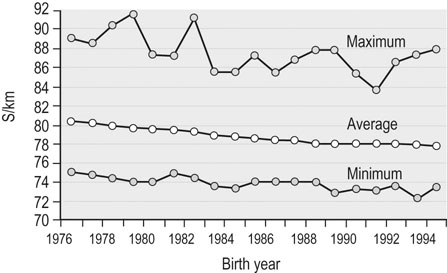
Racing statistics
YEAR
2011
2002
1986
Standardbred population (North America) estimated
135 000
160 000
200 000
Individual horses starting in races (North America)
32 006
39 600
57 021
Total starts (North America)
539 181
649 262
880 022
Purses paid (North America) reported in US dollars
609 283 544
500 724 338
679 378 852
Tracks (North America)
290
356
464

NUMBER OF RACES
% OF RACES
MEAN NUMBER OF HORSES RACING
TOTAL EARNINGS (euros)
% OF EARNINGS
2 years old
179
1.6%
10.8
3 689 000
1.59%
3 years old
2154
19.4%
12.6
40 509 000
17.51%
4 years old
2896
26.1%
13.8
55 365 000
23.93%
5 years old
1717
15.5%
13.8
36 181 000
15.64%
6 years and older
4167
37.5%
14.3
95 653 000
41.34%
TOTAL
11 113
100%
13.7
231 397 000
100%

Relationship of physiologic variables with performance
Gait and racing
Gait

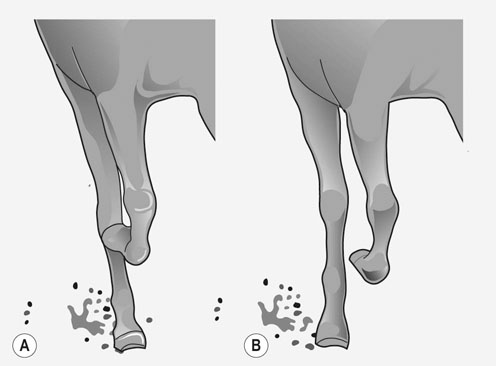
Gait abnormalities – interference
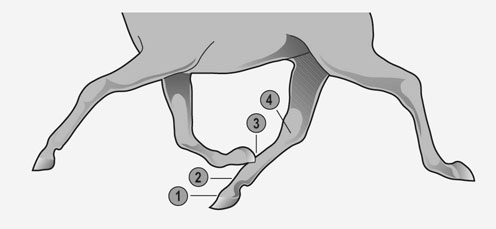
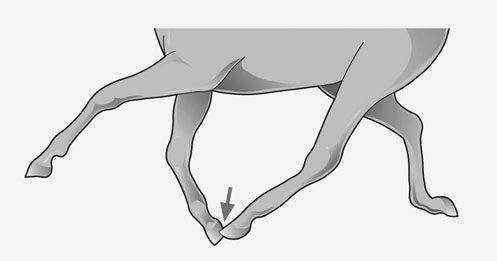
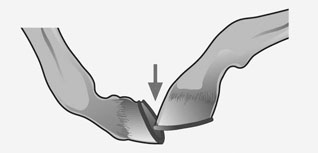
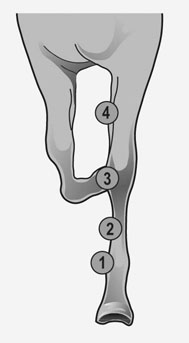
Equipment
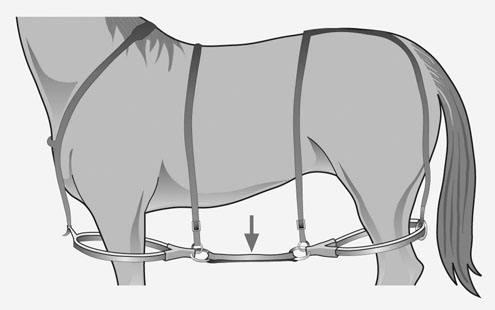
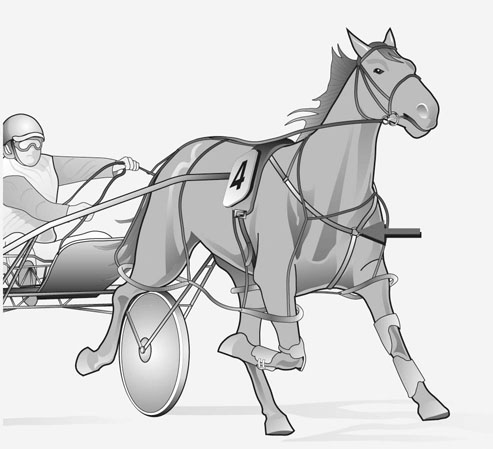
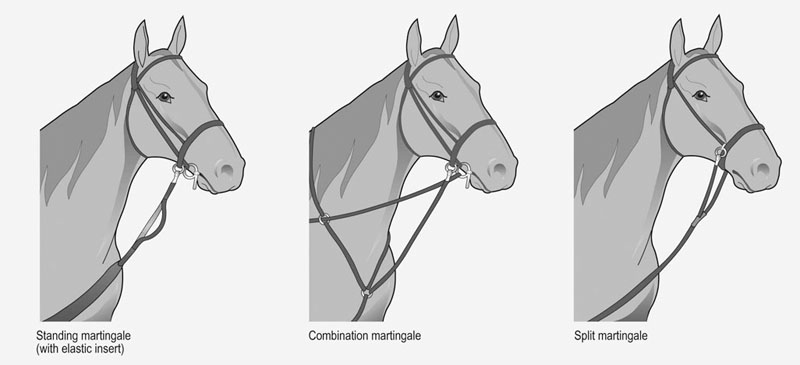

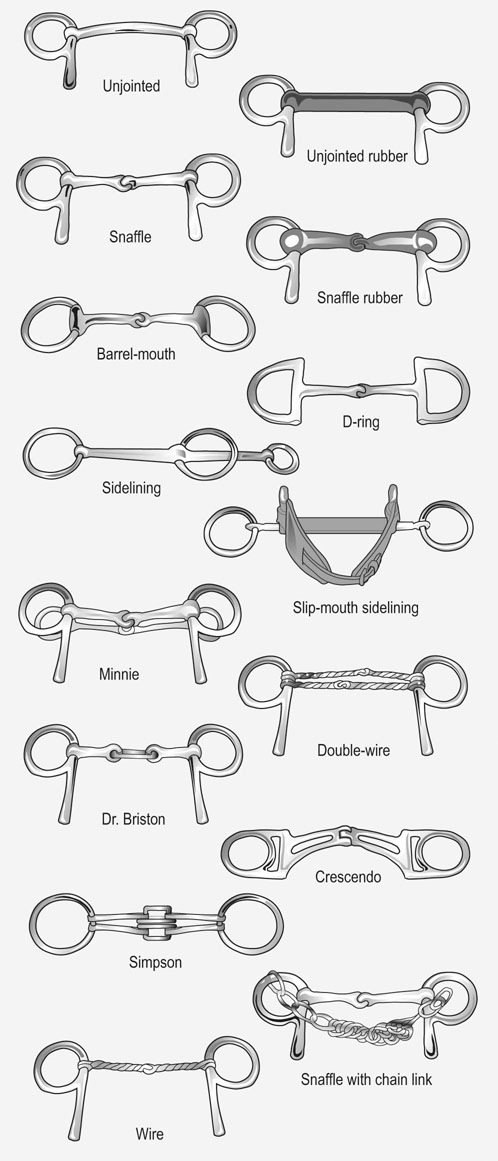
Training the Standardbred
General principles
Training programs
Traditional training programs
Phase 4: Rest or lay-off phase
TRAINING PHASE
TRAINING DAY
TYPE
DISTANCE (m)
SPEED (km/h)
INTENSITY (%)
DURATION (min:s)
Initial Preparation
weeks
1–5
Mon–Sat
jog
12 400
19.6
44.9
38:20
Sun
off
Mid Preparation
weeks 6–10
Mon, Wed, Fri
jog
11 900
19.1
43.7
37:40
Tue, Thu, Sat
fast
4500
32.3
74.0
10:00
![]()
Stay updated, free articles. Join our Telegram channel

Full access? Get Clinical Tree

 Get Clinical Tree app for offline access
Get Clinical Tree app for offline access

